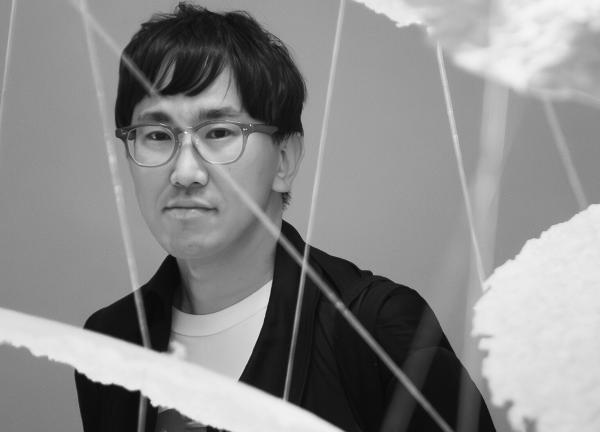Q&A with Toshiki Hirano

Toshiki Hirano is an architectural designer, researcher, and educator based in Tokyo, Japan. Hirano joins the School of Architecture community this fall as our Ruth Carter Stevenson Visiting Professor. This semester, he’s leading an Advanced Design Studio that explores how the concept of the “garden” can serve as a response to the excesses of contemporary life.
Hirano is co-director of the International Architectural Education Platform (SEKISUI HOUSE - KUMA LAB) at the University of Tokyo established by Kengo Kuma in 2020. He also leads his own design studio, THD (Theoretical Hole Design).
Hirano’s research and practice are situated at the crossroads of architecture, art, technology, crafts, and philosophy, exploring the vast, uncharted 'hole' that exists within this intersection. His work has received international recognition and has been exhibited at venues and events including the London Design Biennale, the British Embassy in Tokyo, and Tokyo Midtown.
We caught up with Hirano to learn more about his research and experience on campus.
What have you enjoyed about your experience in Austin and with UTSOA?
Pretty much everything except the heat!
Colin Rowe, who taught at UTSOA early in his U.S. career, noted that the Texas landscape and the emerging talent concentrated at the school, known as the “Texas Rangers,” helped inspire his essay “Transparency.” That was decades ago, and I assume that both the city and the school have changed a lot, yet I still sense the same spirit today.
I also want to mention that I have the privilege of staying at the Charles Moore/Andersson Compound this semester. I was born and raised in Kobe, Japan, where I grew up looking at a housing complex designed by the late Charles Moore, so there is a personal connection. The spaces in Moore’s house, filled with an “excess” of toys and objects, echo what I am exploring in my UTSOA studio, “Garden of Excess,” which invites students to develop projects from personal obsessions.
In your lecture, “Aesthetics of (in)excess," you explored how architecture responds to excess. What drew you to this area of interest?
I believe that architecture, to some extent, reflects the social, cultural, political, economic, and environmental conditions of its time.
In the 1990s, an “age of connectivity” fostered an aesthetic of continuous surfaces and seamless flow, aligned with optimism about globalization and networks. In the 2010s, an “age of disjunction” emerged as fragmentation, crises, and planetary limits drew attention to boundaries, ruptures, and discontinuities. Today we live in an “age of excess,” defined by an overflow of information and material. My interest is in how architecture can operate critically within this condition and articulate new aesthetic modes.
Your work navigates the uncharted 'hole' at the intersection of architecture, art, technology, crafts, and philosophy. What questions should students be asking themselves when stepping into this complex territory?
We are witnessing the dissolution and diffusion of the discipline today. Practicing architecture now means not only designing buildings, but also working across other fields and making things in both physical and digital realms. There is always an uncharted “hole” ahead, and knowing your obsessions can serve as a powerful anchor as you dive into it. This is an era of excess, and it is easy to drown in the flood of issues, requirements, and parameters. In this condition, I believe that we each need to ask what lies deep in our unconscious.
I am not suggesting that we should isolate ourselves from one another, but quite the opposite. The Surrealist movement in the 1920s explored obsession through experiments in automatic writing as a way to probe the unconscious. As automatic writing progresses, personal pronouns such as “I” often recede from the page, which suggests a connection that extends beyond the individual toward a collective unconscious.

